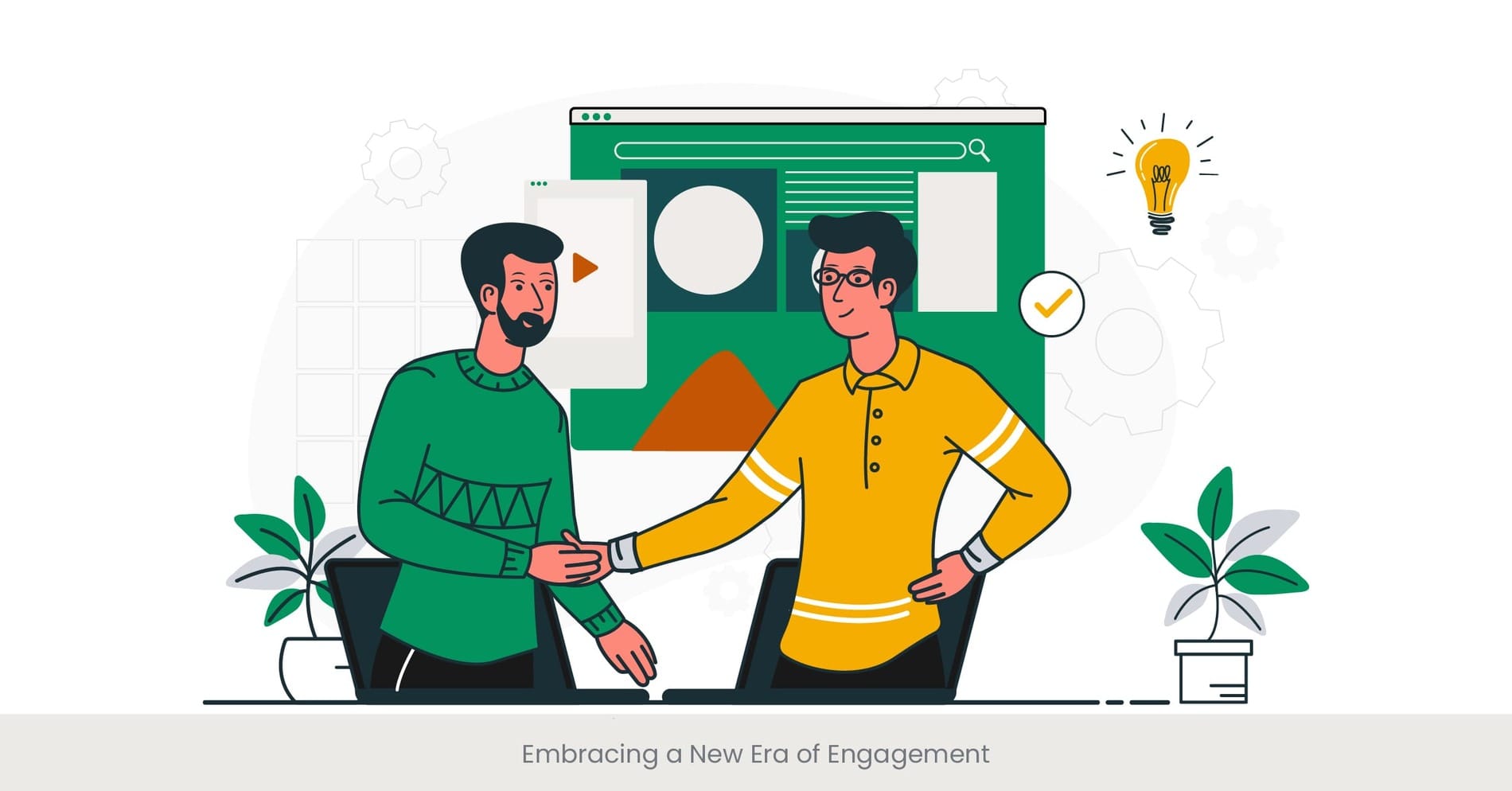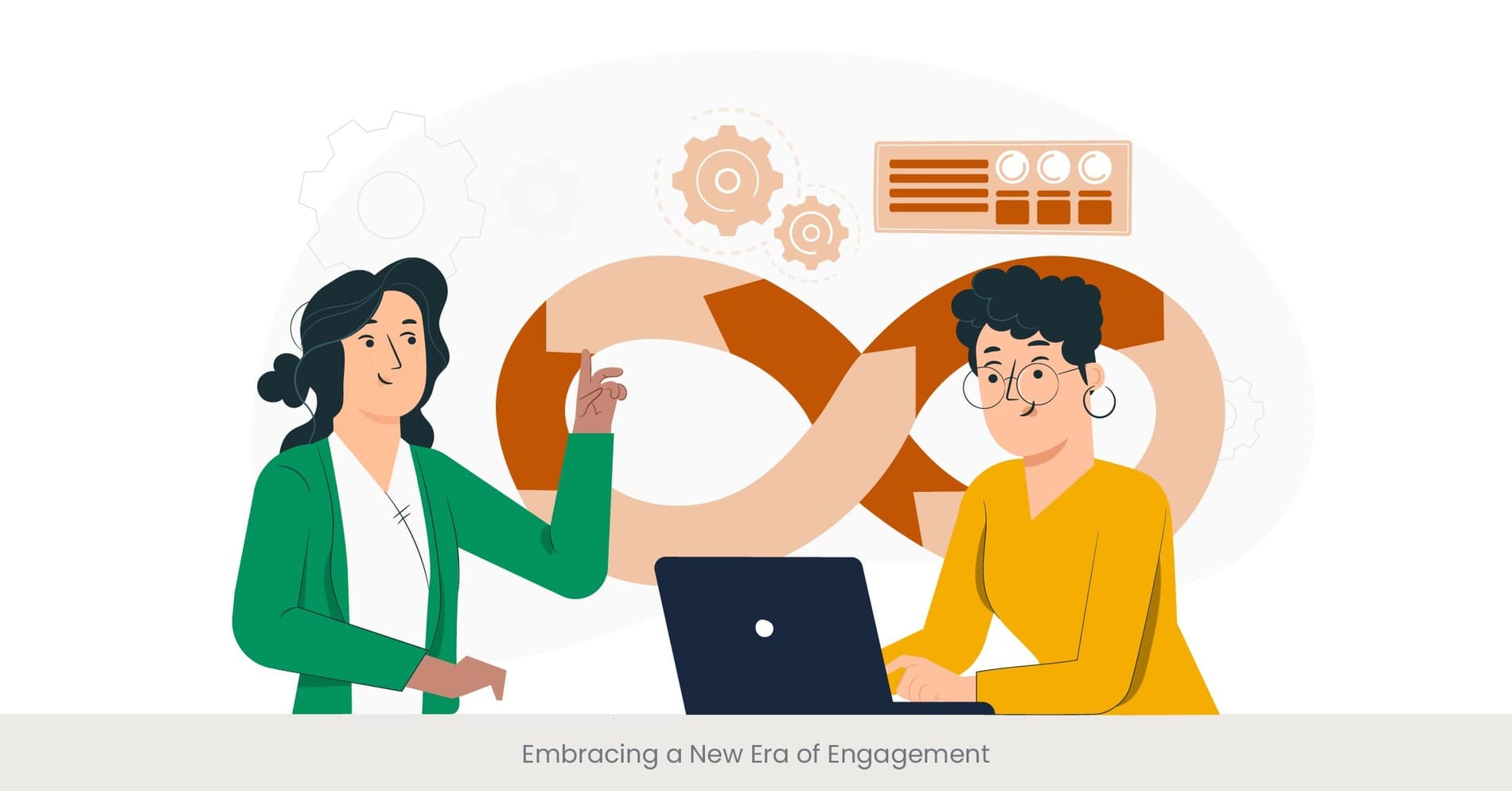
Embracing a New Era of Engagement

The landscape of event presentations is undergoing a remarkable transformation, propelled by technological innovation and shifting audience expectations. As we look to the future, it's clear that the traditional paradigms of presenting are evolving towards more dynamic, interactive, and immersive experiences. This forward-looking perspective aims to explore the trends and technologies that will shape the future of event presentations, offering insights into how presenters and organizers can prepare to meet the demands of tomorrow's audiences.
Implementing Customized Experiences
Implementing highly customized presentation designs will require presenters and organizers to invest in sophisticated content management systems and presentation software that supports modular content and dynamic adjustment. Training for presenters will also evolve, focusing on flexibility and the ability to engage with technology seamlessly during delivery.
Workshops and feedback sessions will become more integral, providing insights into what attendees found most engaging or lacking. These insights will drive further customization, creating a virtuous cycle of improvement and personalization.
Highly customized presentation design will also depend on a set of core principles:
- Audience Analysis: Deep dives into audience demographics, interests, and behavior patterns will become standard practice. This analysis will guide every aspect of presentation design, from the choice of topics to the modes of interaction.
- Adaptive Content: Presentations will be designed to adapt on the fly, with content and delivery methods changing in response to real-time feedback and engagement metrics. This might involve switching between presentation styles—such as from a lecture to a Q&A or interactive workshop—based on audience engagement levels.
- Visual and Sensory Personalization: The aesthetic elements of presentations, including graphics, colors, and even soundscapes, will be personalized. Sensory customization could extend to AR and VR elements, offering a multisensory experience that aligns with the audience's preferences or the presentation's theme.
Hybrid Events: A Balanced Approach
Strategies for Seamless Integration: Future hybrid events will necessitate advanced planning to ensure a cohesive experience for both virtual and in-person audiences. This involves selecting platforms that offer robust interaction capabilities, such as live polling, Q&A, and virtual networking spaces that mimic the dynamics of physical venues. Training speakers to engage with both audiences simultaneously will be key, as will be the use of multi-camera setups to create a more dynamic viewing experience for online participants.
Immersive Technologies: Beyond the Screen
Developing AR and VR Content: As AR and VR become more mainstream, presenters will need to master new tools for creating immersive content. This might involve partnerships with AR/VR development studios or investing in in-house capabilities to craft virtual environments that are both informative and engaging. The challenge will be to design experiences that are accessible to attendees with varying levels of technology proficiency and to provide options for those without access to high-end VR equipment.
Artificial Intelligence: Dynamic Adaptation
Leveraging AI for Engagement Analytics: Advanced AI algorithms will offer real-time insights into audience engagement, analyzing data points like attention span, participation rates, and emotional responses. Presenters can use these analytics to adjust their delivery or content on the fly, catering to the audience's interests and energy levels. Additionally, AI-powered assistants could facilitate personalized follow-ups, offering resources or answering questions based on each attendee's engagement during the event.
Sustainability: Greening the Presentation Ecosystem
Eco-Friendly Practices and Technologies: Embracing sustainability in event presentations will extend beyond digital formats to include eco-conscious choices in physical venues, such as using sustainable materials for staging, energy-efficient lighting, and digital rather than printed materials. Event organizers will also start to consider the environmental impact of their vendor choices, prioritizing companies that offer green solutions for event logistics.
Accessibility: Universal Design Principles
- Implementing Inclusive Technologies: Future trends will emphasize the importance of designing presentations that are universally accessible. This includes the use of speech-to-text technologies for real-time captioning, audio descriptions for visual content, and ensuring all digital platforms used are compliant with web accessibility standards. Presenters might also explore the use of haptic feedback systems for tactile experiences, particularly in virtual or augmented reality environments, to ensure inclusivity for attendees with visual impairments.
- Training and Awareness: Educating event planners, presenters, and technical staff on the principles of inclusive design will be crucial. Workshops and training sessions on accessibility practices can help ensure that all aspects of event presentations, from content creation to delivery, consider the diverse needs of the audience.
Advanced Interaction Techniques: Engaging Deeper
- Enhanced Audience Participation Tools: Future presentations will likely see the integration of more sophisticated tools designed to facilitate deeper audience interaction. Beyond simple polls and Q&As, we can anticipate platforms that enable breakout sessions within larger events, allowing for small group discussions that can then be shared with the wider audience. Tools that allow audience members to contribute content in real time, such as collaborative whiteboards or shared digital canvases, will enable a more participatory experience, making presentations feel more like collective endeavors than one-way broadcasts.
- Enhanced Audience Participation Tools: Future presentations will likely see the integration of more sophisticated tools designed to facilitate deeper audience interaction. Beyond simple polls and Q&As, we can anticipate platforms that enable breakout sessions within larger events, allowing for small group discussions that can then be shared with the wider audience. Tools that allow audience members to contribute content in real time, such as collaborative whiteboards or shared digital canvases, will enable a more participatory experience, making presentations feel more like collective endeavors than one-way broadcasts.
Leveraging Data for Continual Improvement

- Post-Event Analytics for Long-Term Engagement: The future of event presentations will also see an increased emphasis on post-event analytics. By analyzing detailed data on attendee engagement and participation, organizers and presenters can gain insights into what worked well and what could be improved for future events. This continuous feedback loop will be crucial for refining presentation strategies and content to better meet audience needs.
- Predictive Analytics for Audience Insights: Predictive analytics will play a larger role in planning and customizing event presentations. By analyzing historical data on attendee behavior and preferences, AI models can predict topics of interest, preferred formats, and even optimal timing for sessions. This proactive approach allows organizers to design events that are more closely aligned with audience expectations, potentially increasing attendance and participation rates.
Wrapping Up
As we look toward the future of event presentations, it's evident that the combination of technological innovation, a commitment to sustainability and accessibility, and a deeper understanding of audience engagement will be key to creating memorable and impactful experiences. By embracing these trends and preparing for their integration into the event planning and presentation process, organizers and presenters can ensure that they are not just keeping pace with changes but are at the forefront of defining the future of interactive events.
Conclusion
The future of event presentations is poised at the intersection of innovation, sustainability, and inclusivity. As we move forward, the challenge for presenters and organizers will be to harness emerging technologies and trends to create experiences that are not only engaging and immersive but also responsible and accessible to all. By anticipating these developments and preparing to adapt, those in the field can lead the way in transforming how we connect, share, and learn through presentations.



%20(1).jpg)
%20(1).jpg)


